
Journal of Ophthalmic & Vision Research
Scope & Guideline
Exploring Innovations in Eye Health
Introduction
Aims and Scopes
- Clinical Ophthalmology:
Focusing on clinical outcomes, diagnostic techniques, and treatment strategies for various ocular diseases, including cataracts, glaucoma, retinal disorders, and ocular surface diseases. - Innovative Technologies:
Exploring the application and impact of new technologies such as artificial intelligence, optical coherence tomography, and advanced surgical techniques in the diagnosis and treatment of eye conditions. - Epidemiology and Public Health:
Investigating the prevalence, risk factors, and socio-economic impacts of ocular diseases, especially in specific populations or regions, to improve eye health care strategies. - Translational Research:
Bridging laboratory findings with clinical applications, particularly in areas such as stem cell therapy, drug delivery systems, and the development of new therapeutics. - Vision Science and Rehabilitation:
Studying the physiological and psychological aspects of vision, including visual perception, rehabilitation strategies for visual impairment, and the impact of systemic diseases on eye health.
Trending and Emerging
- Artificial Intelligence in Ophthalmology:
There is a growing body of research focusing on the integration of artificial intelligence for diagnostic and treatment purposes, showcasing its potential to enhance clinical decision-making and patient outcomes. - Personalized Medicine and Targeted Therapies:
Emerging studies are increasingly centered around individualized treatment strategies, particularly in conditions like diabetic retinopathy and age-related macular degeneration, reflecting a shift towards tailored healthcare. - Impact of Systemic Diseases on Eye Health:
Research examining the relationship between systemic diseases (like diabetes and COVID-19) and ocular health is on the rise, emphasizing the importance of a multidisciplinary approach to patient care. - Advanced Imaging Techniques:
The use of sophisticated imaging modalities, such as OCT angiography, is gaining traction, with studies focusing on their applications in early diagnosis and monitoring of ocular diseases. - Ocular Drug Delivery Systems:
Innovative research on new drug delivery methods, including nanoparticle systems for retinal therapies, is emerging as a significant area of focus, enhancing treatment efficacy and patient compliance.
Declining or Waning
- Conventional Surgical Techniques:
While traditional surgical approaches remain important, there has been a notable decrease in papers focusing solely on conventional techniques, as new technologies and minimally invasive methods gain prominence. - Basic Science Studies:
There has been a waning interest in purely basic science research in ophthalmology, with a shift towards studies that have direct clinical applications or that utilize advanced technologies. - General Reviews of Ocular Pathologies:
Generalized reviews on common ocular diseases are becoming less frequent, as more targeted and specific studies are preferred, reflecting a trend towards precision medicine.
Similar Journals

Journal of Optometry
Transforming eye care with cutting-edge research.The Journal of Optometry, published by Elsevier, is a leading open access journal dedicated to advancing the field of optometry and vision science. With an ISSN of 1888-4296 and an E-ISSN of 1989-1342, this journal serves as a pivotal platform for researchers, practitioners, and academics alike to disseminate and engage with high-quality original research and review articles. As of 2023, the journal holds an impressive Q2 ranking in the Optometry category, demonstrating its influence and relevance, particularly as it ranks #2 out of 12 in the Health Professions - Optometry category on Scopus with an 87th percentile. Since becoming open access in 2008, the Journal of Optometry has prioritized accessibility and the exchange of ideas, enriching the scholarly community and enhancing practical application in clinical settings. The journal welcomes submissions that push the boundaries of ocular research, clinical practices, and the education of optometry professionals, making it an essential resource for anyone invested in the future of eye health.

Asia-Pacific Journal of Ophthalmology
Exploring the frontiers of eye health research.Asia-Pacific Journal of Ophthalmology is a distinguished open access journal published by the Asia-Pacific Academy of Ophthalmology (APAO), specializing in the latest advancements and research in ophthalmology. Since its inception in 2013, this journal has established itself as a vital platform for disseminating innovative findings and clinical practices across the Asia-Pacific region and beyond. With an impressive Scopus ranking of #10 out of 137 in the field of Medicine (Ophthalmology), placing it in the 93rd percentile, it garners significant attention and respect within the academic community. Currently holding a Q1 categorization in both Medicine (miscellaneous) and Ophthalmology, the journal embraces a broad scope that encompasses clinical studies, experimental research, and reviews aimed at enhancing the understanding and management of eye health. Its open access model since 2019 ensures that all published works are freely accessible, promoting greater collaboration and knowledge sharing among researchers, clinicians, and students. Situated in the Netherlands with a prominent address in Hong Kong, the journal serves as an essential resource for anyone dedicated to the field of ophthalmology.
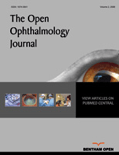
Open Ophthalmology Journal
Advancing ocular health through open-access research.The Open Ophthalmology Journal, published by Bentham Science Publishers Ltd, is a vital resource in the field of ophthalmology, dedicated to advancing knowledge through open-access research. With an ISSN of 1874-3641, it offers a platform for the dissemination of innovative studies from 2011 to 2024, focusing on the latest developments in eye care and vision science. Despite being categorized in the lower quartile (Q4) according to the 2023 rankings, and holding a position in the Scopus Ricks at 113 out of 137 in the ophthalmology domain, the journal serves as a valuable outlet for emerging scholars and seasoned researchers alike to share their findings. The journal's commitment to accessibility ensures that its content is available to a broad audience, promoting collaboration and knowledge exchange. Located in the Netherlands, The Open Ophthalmology Journal aspires to become a cornerstone for those passionate about understanding and improving ocular health through rigorous scientific inquiry.
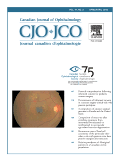
CANADIAN JOURNAL OF OPHTHALMOLOGY-JOURNAL CANADIEN D OPHTALMOLOGIE
Elevating standards in clinical ophthalmology.Canadian Journal of Ophthalmology - Journal Canadien d'Ophtalmologie, published by the prestigious Canadian Ophthalmological Society, serves as a leading platform for disseminating cutting-edge research in the field of ophthalmology. With an ISSN of 0008-4182 and E-ISSN 1715-3360, the journal boasts a commendable impact factor and maintains a strong presence within the medicine and ophthalmology categories, ranking in the Q2 quartile. This journal not only provides significant insights into clinical practices and advancements but also contributes to the understanding of ocular health issues facing contemporary society. Since its inception in 1966, it has published high-quality research, making substantial strides in both practical and theoretical aspects of ophthalmology until 2024. Although it is not an open-access journal, it establishes a vital resource for researchers, professionals, and students alike, fostering an informed community dedicated to improving vision care.

Journal of Ophthalmology
Illuminating Innovations in OphthalmologyThe Journal of Ophthalmology, published by HINDAWI LTD, is an esteemed open-access journal that has been disseminating significant research in the field of ophthalmology since 2009. With an ISSN of 2090-004X and an E-ISSN of 2090-0058, this journal facilitates global access to cutting-edge studies, making it an essential resource for researchers, clinicians, and students alike. Ranked in the Q2 category of ophthalmology for 2023, the journal holds a commendable position with a Scopus rank of #37 out of 137 in its field, placing it in the 73rd percentile. The journal encompasses a variety of topics such as clinical advancements, surgical techniques, and innovative technologies in eye care, aiming to advance scientific knowledge and clinical practice in ophthalmology. By providing a platform for both novel research and comprehensive reviews, the Journal of Ophthalmology is instrumental in fostering collaboration and scholarly communication within the global eye health community, and its commitment to open access ensures that impactful research reaches a wide audience without barriers.

MOLECULAR VISION
Connecting the dots in vision research for global impact.MOLECULAR VISION is a premier open-access journal that has been advancing the field of ophthalmology since its inception in 1995. Published by MOLECULAR VISION, this journal boasts a strong reputation, currently ranking in the second quartile (Q2) of its category, with a Scopus ranking of 35 out of 137, placing it in the 74th percentile among peer publications. Dedicated to disseminating groundbreaking research and innovative findings in the study of vision and ocular health, MOLECULAR VISION serves as a vital resource for researchers, healthcare professionals, and students engaged in this dynamic field. The journal welcomes contributions spanning fundamental and clinical research, offering a platform for crucial knowledge exchange that is essential for advancing ocular health and function. With its commitment to open access, readers around the globe can freely access and build upon the wealth of information disseminated through its pages, ensuring that the latest developments in ophthalmology are available to all.
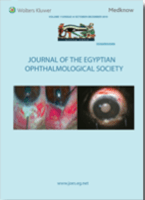
Journal of the Egyptian Ophthalmological Society
Exploring new horizons in eye health and research.Journal of the Egyptian Ophthalmological Society is a premier academic journal dedicated to advancing the field of ophthalmology through high-quality peer-reviewed research. Published by Wolters Kluwer Medknow Publications, this journal plays a critical role in disseminating vital findings and innovations in eye care, fostering knowledge exchange among researchers, practitioners, and educators worldwide. Since its transformation to Open Access in 2014, it has significantly enhanced the accessibility of eye health information, thereby broadening its impact on the global scientific community. With an ISSN of 2090-0686 and an E-ISSN of 2314-6648, the journal aims to tackle contemporary issues in ophthalmology, including clinical practices, public health, and technological advancements in eye care. The journal's commitment to excellence ensures that it remains a vital resource for those looking to contribute meaningfully to this dynamic and crucial field.
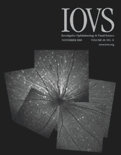
INVESTIGATIVE OPHTHALMOLOGY & VISUAL SCIENCE
Pioneering research for a clearer tomorrow.Investigative Ophthalmology & Visual Science (IOVS) is a leading academic journal published by the Association for Research in Vision and Ophthalmology, dedicated to advancing the field of ophthalmology and visual science. With an impressive impact factor and ranking in the Q1 category for both Ophthalmology and Sensory Systems, IOVS is well-respected for disseminating cutting-edge research and innovative discoveries. Established in 1977, this Open Access journal allows for broad accessibility to pioneering studies, fostering collaboration among researchers, clinicians, and students. The journal has consistently maintained high visibility in the academic community, evidenced by its robust rankings in Scopus, including Rank #16 in Ophthalmology. As it continues to pave the way for future developments in the understanding and treatment of ocular diseases, IOVS serves as an invaluable resource for those immersed in the complex field of visual science.

BRITISH JOURNAL OF OPHTHALMOLOGY
Transforming Understanding of Vision and ImpairmentThe British Journal of Ophthalmology, published by the BMJ Publishing Group, stands as a leading peer-reviewed journal in the field of ocular sciences, with a distinctive focus on advancing the understanding of vision and its impairment. With a rich history dating back to 1941, this journal serves as an essential platform for researchers, professionals, and students in ophthalmology and related disciplines. It prominently ranks in the Q1 quartile for Ophthalmology and Cellular and Molecular Neuroscience in 2023, reflecting its esteemed reputation in the scientific community. The journal boasts impressive Scopus rankings, including Rank #6 in Medicine - Ophthalmology, showcasing its influential contributions to the field. Although it does not offer open access, the journal is committed to disseminating high-quality research that informs clinical practices and enriches the understanding of sensory systems. Submissions are encouraged from all areas of ophthalmology, including clinical studies, innovative research, and systemic reviews. Join the vibrant academic dialogue by engaging with the cutting-edge findings published in the British Journal of Ophthalmology, which aims to bridge the gap between research and clinical application.
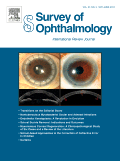
SURVEY OF OPHTHALMOLOGY
Exploring Innovations in Vision HealthSURVEY OF OPHTHALMOLOGY is a premier journal published by Elsevier Science Inc, dedicated to advancing knowledge in the field of ophthalmology. With an impact factor reflective of its high-quality research—ranking 7th out of 137 in the Scopus category for medicine and ophthalmology, this journal maintains a prestigious Q1 categorization in its field for 2023. Since its inception in 1956, the journal has provided comprehensive reviews and original articles covering various aspects of ophthalmic research and clinical practice, supporting the ongoing education of researchers, professionals, and students alike. While open access options are not available, the journal remains an essential resource for the latest developments, discoveries, and expert insights that shape the future of eye health. Based in the United States, at STE 800, 230 Park Ave, New York, NY 10169, the journal continues a legacy of excellence in ophthalmology until 2024 and beyond, making it a pivotal element of scholarly discourse in this vital medical discipline.